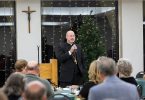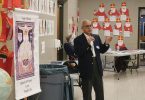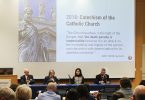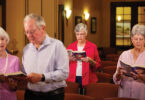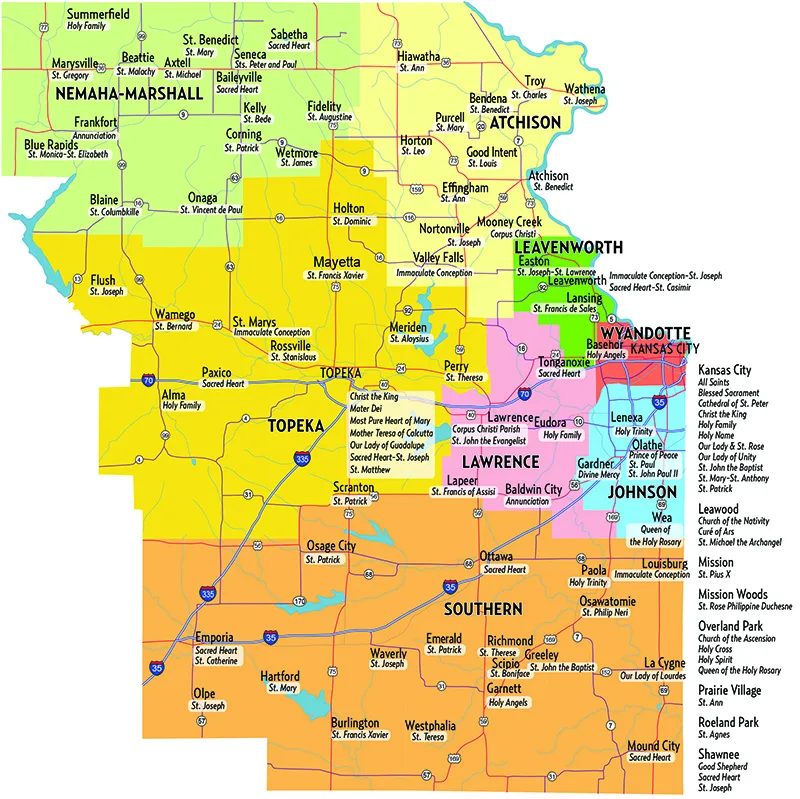
by Moira Cullings
moira.cullings@theleaven.org
KANSAS CITY, Kan. — “We’re all one family,” said Father Anthony Saiki.
But each geographic region of the Archdiocese of Kansas City in Kansas has its own needs, he said, and parish priests desire fraternity and support.
To foster a greater sense of community, the pastoral regional model that’s been in place in the archdiocese since the 1970s was changed to a deanery model, effective Jan. 1.
Deaneries fall under the Code of Canon Law, that states that a bishop has authority to group parishes together based on geographical location.
Each deanery is served by a dean — a priest who pastors a parish within it. The geographic locations of the archdiocesan deaneries will remain the same.
“I think there’s a lot of potential,” said Father Saiki, rector of the Cathedral of St. Peter in Kansas City, Kansas, and a member of the presbyteral council.
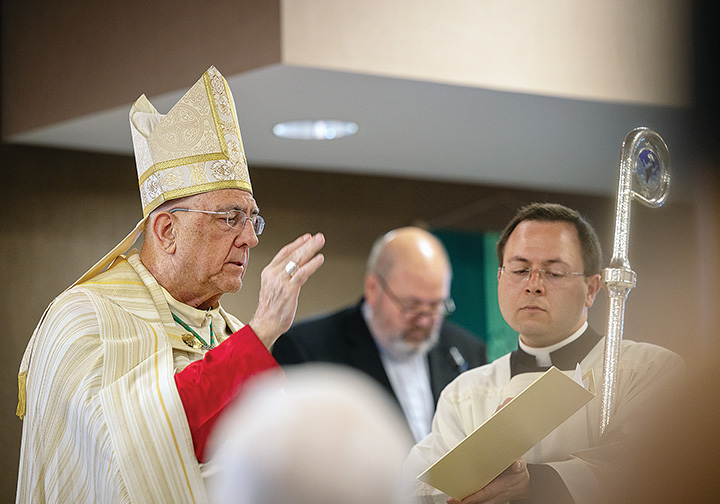
Father Saiki explained how the change came about.
“We, since the ’70s, had our pastoral regional model,” he said, “and the goal of it was to help coordinate parochial efforts in particular regions.
“And it worked. It was a beautiful system.”
But over time, the role of the regional leader became ineffective, he said, and communication within the regions grew stagnant.
“It came to the forefront of the conversation with [Archbishop Joseph F. Naumann] and the presbyteral council when the priests of the Southern Region wrote a letter suggesting that we consider deaneries,” said Father Saiki.
The letter was sent around a year ago.
Since then, Archbishop Naumann and the presbyteral council had multiple conversations about how the model could be reformed, revamped or switched up entirely.
Deaneries were at the forefront of the conversation.
The priestly life committee of the presbyteral council was tasked with formulating a concrete plan for potential deaneries, which was voted on by the council and accepted by the archbishop.
Prior to the pastoral regional model, the archdiocese used a deanery model based on the 1917 Code of Canon Law.
“It was seen much more administratively,” said Father Saiki, “and the pastoral region model was to really adopt a more pastoral focus.”
The Code of Canon Law of 1983, that the church follows now, encourages deaneries, he continued, “but it has this pastoral infusion from the Second Vatican Council.”
Canon law describes a dean as an “older brother” to his fellow priests.
“He’s to bring the bishop and the bishop’s heart to that deanery,” said Father Saiki.
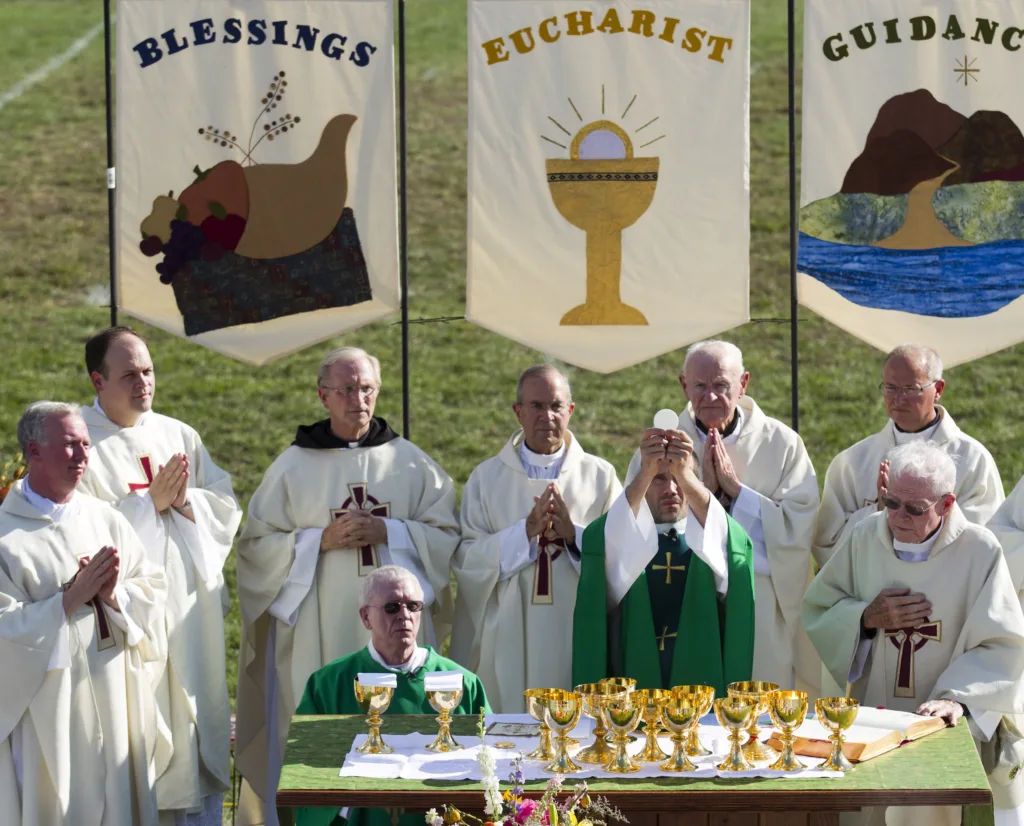
One of the most notable changes that comes with this model is that deans will conduct pastoral visits periodically at each of the parishes within his deanery.
“One of the biggest things really centered around a hope for some more subsidiarity within the archdiocese,” said Father Daniel Stover, pastor of Holy Angels Parish in Garnett and St. John the Baptist Parish in Greeley.
Father Stover served as the Southern Region leader since 2019 and is now its dean.
Handling issues at a more local level should help deans and parishes collaborate effectively together, he said.
“The Southern Deanery is very different from Johnson County,” said Father Stover, “and I’m from Topeka, which is completely different from those other two.
“The local cultures and the needs of the parishes are very different in the deaneries. To have someone who is both aware of them and can support and guide a little bit — that’s one of my biggest hopes for it.”
Deans are recommended by priests in their deaneries, and the final selection is made by Archbishop Naumann.
Father Bill Bruning, pastor of Queen of the Holy Rosary Parish in Overland Park, was honored to be appointed dean of the Johnson County Deanery.
He’s looking forward to the fraternal aspect of the role.
“There’s more of an emphasis on visiting the other pastors, reaching out to them, seeing how they’re doing,” said Father Bruning.
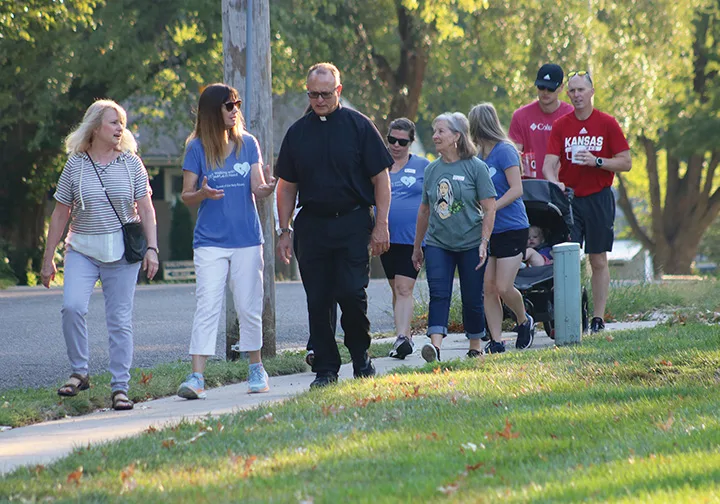
Deans can hold pastors accountable, ensuring matters like bookkeeping and sacramental records are being kept up with.
They can answer any questions, concerns or conflicts that arise at parishes, share resources and ideas on best practices, and see that church buildings and sanctuaries are well cared for.
But deans can also foster connection with their brother priests and create fellowship opportunities so they feel less alone.
“That’s my hope,” said Father Bruning, “is that this role of dean won’t be one of watchdog or police, but it’s one of fraternal support and care.”
Father Saiki is excited for the potential impact this change can have on the archdiocese.
“I really hope that this new model will bring a greater unity to our presbyterate,” he said, “that our priests will connect more with each other, with the archdiocese, and that our parishes can connect better with each other.”



